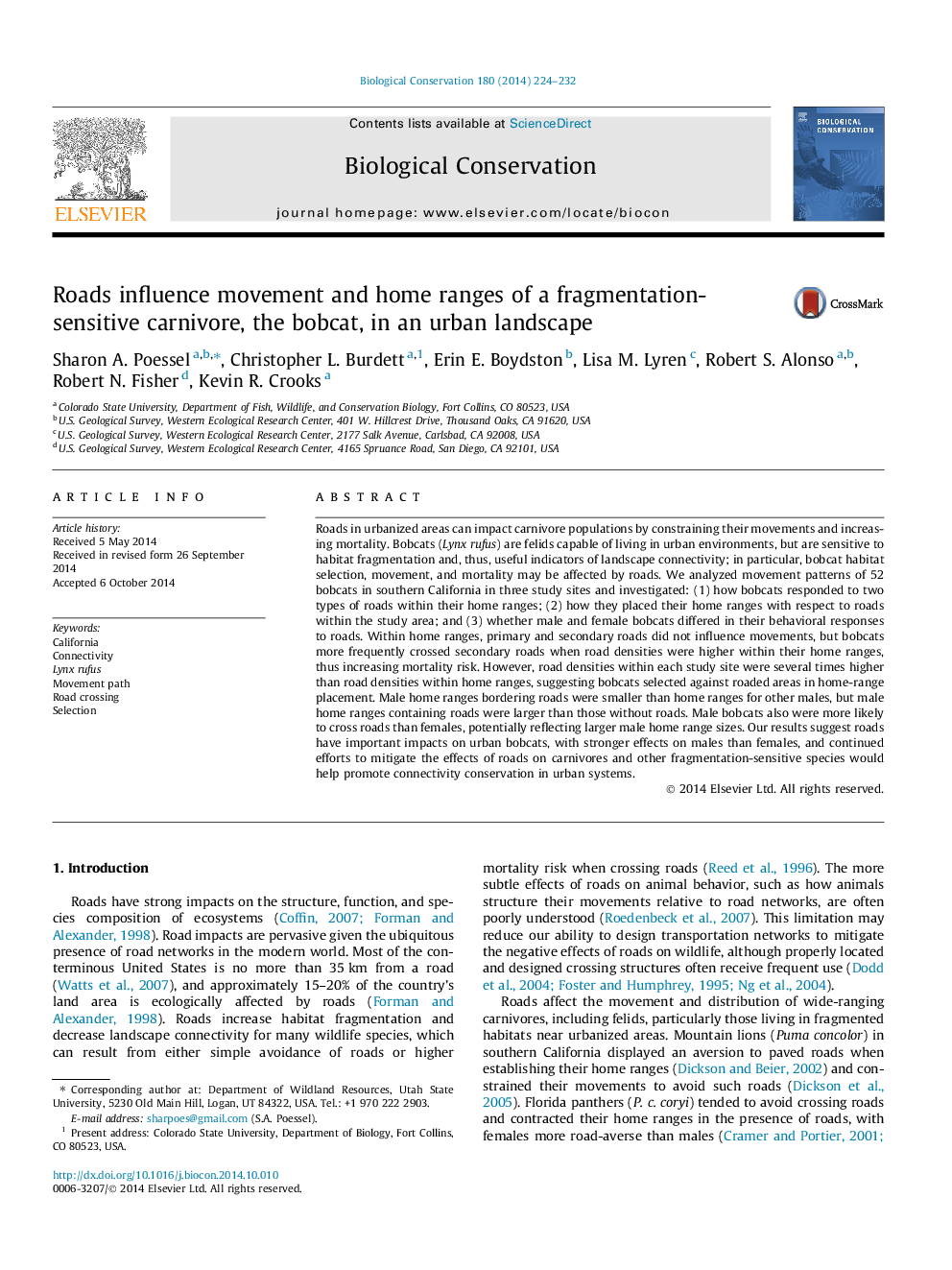| Article ID | Journal | Published Year | Pages | File Type |
|---|---|---|---|---|
| 6299612 | Biological Conservation | 2014 | 9 Pages |
Abstract
Roads in urbanized areas can impact carnivore populations by constraining their movements and increasing mortality. Bobcats (Lynx rufus) are felids capable of living in urban environments, but are sensitive to habitat fragmentation and, thus, useful indicators of landscape connectivity; in particular, bobcat habitat selection, movement, and mortality may be affected by roads. We analyzed movement patterns of 52 bobcats in southern California in three study sites and investigated: (1) how bobcats responded to two types of roads within their home ranges; (2) how they placed their home ranges with respect to roads within the study area; and (3) whether male and female bobcats differed in their behavioral responses to roads. Within home ranges, primary and secondary roads did not influence movements, but bobcats more frequently crossed secondary roads when road densities were higher within their home ranges, thus increasing mortality risk. However, road densities within each study site were several times higher than road densities within home ranges, suggesting bobcats selected against roaded areas in home-range placement. Male home ranges bordering roads were smaller than home ranges for other males, but male home ranges containing roads were larger than those without roads. Male bobcats also were more likely to cross roads than females, potentially reflecting larger male home range sizes. Our results suggest roads have important impacts on urban bobcats, with stronger effects on males than females, and continued efforts to mitigate the effects of roads on carnivores and other fragmentation-sensitive species would help promote connectivity conservation in urban systems.
Related Topics
Life Sciences
Agricultural and Biological Sciences
Ecology, Evolution, Behavior and Systematics
Authors
Sharon A. Poessel, Christopher L. Burdett, Erin E. Boydston, Lisa M. Lyren, Robert S. Alonso, Robert N. Fisher, Kevin R. Crooks,
